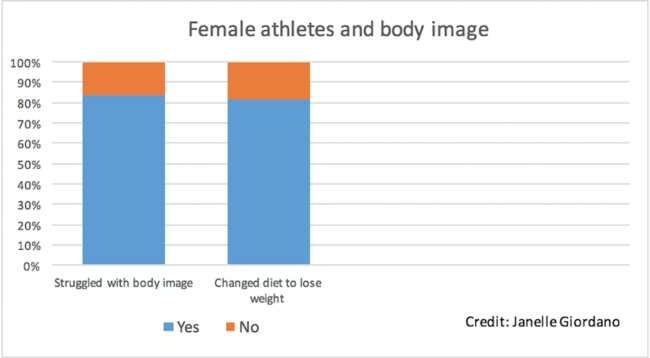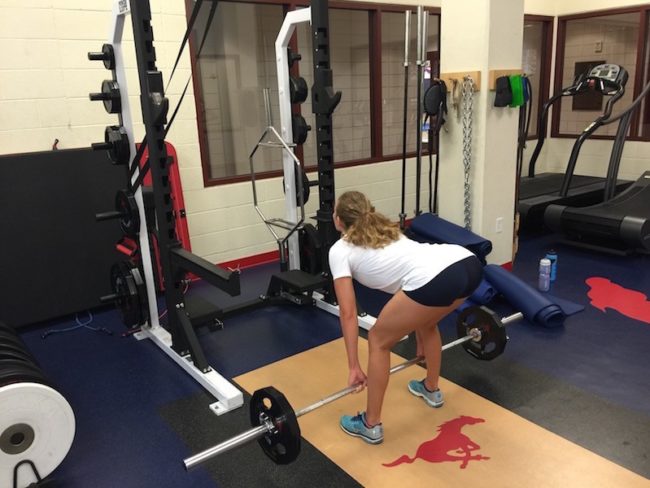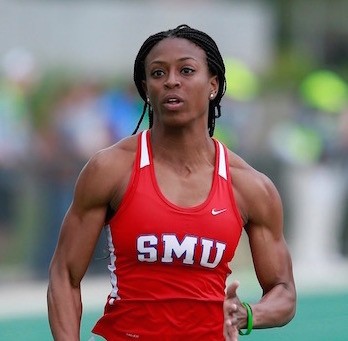Defined, muscular, strongly built, and beautiful. That’s how Craisha Washington, a former track runner at SMU, would describe her physique. Her arms and legs are dominated by muscle that has been cut and toned over years of strength training and proper nutrition.
Washington is aware that her build might be considered “manly” according to some cultural norms, but she loves every bit of it.

“I definitely feel abnormal, but I embrace it because I know I’m unique,” said Washington, who posted a record time in the 100-meter dash as a fifth-year senior last season, a record she hadn’t touched since her freshman year.
Washington’s positive outlook on body image, however, may not be as common among many female athletes, especially in sports like track, basketball, or swimming where muscle and bulk are necessary for high performance.
Females feel pressured to look like the skinny models that typically appear on the cover of fashion magazines, and athletes aren’t immune to it. Athletes also face monthly weigh-ins that add to the pressure of being a certain size and weight.
A recent survey by the Daily Campus of 54 SMU women athletes shows that roughly 83 percent of female athletes on campus have struggled with body image at some point in their lives. Nearly 82 percent of the athletes said they have altered their diet to lose weight.

“I’ve struggled with body image before, mainly because of the exposure of being in a swim suit,” said Maddie Hoch, a senior swimmer at SMU who took the survey. “I see a lot of girls in the cafeteria eating veggies for dinner, but you have to recognize that, as an athlete, your body needs more calories and you need to take care of it.”
Brittney Bearden, the sports dietitian for SMU athletics, said that it is common for female athletes to have disordered eating, in which their caloric intake is not sufficient for the amount of energy they must exert during training.
“Sometimes girls get this idea that they need to eat just like their friends who aren’t athletes, which isn’t the case at all,” said Bearden. “Athletes have very different needs in order to perform well in their sport.”
Some of the reasons behind these body image issues and restrictive dieting is society’s presentation of what the perfect body looks like. In the survey, 63 percent of female athletes said they strongly agree that society puts pressure on women to be skinny and fit.
“I think the stereotypical model puts athletes down considering we don’t have the ideal bodies,” said Hoch.
Disordered eating is just one part of the “Female Athlete Triad” addressed by the International Olympic Committee’s (IOC) Medical Commission. The triad consists of three different health problems that officials say are serious concerns for female athletes in competitive sports: disordered eating, menstrual disturbances, and bone loss.
Disordered eating is the main cause of the other two components in the triad, and any combination of them can severely inhibit an athlete’s ability to compete.
The Medical Commission states that women diet in order to lose weight and increase their performance, but they are actually hurting themselves by deteriorating muscle mass along with body fat.
Hoch, one of the female athletes who said she altered her diet to lose weight, noticed firsthand the effects of inadequate nutrition on performance.
“I’ve noticed that when I diet it’s a lot harder to perform my best during practice,” said Hoch.
While research shows that the majority of female athletes have made these dietary modifications, many believe that the media is doing a better job of shining the light on strong women and have included more professional athletes in their ads.
In recent years, female athletes like Serena Williams and Ronda Rousey have made appearances on the cover of fashion magazines such as Vogue and Maxim. These strong and successful women are proving that you don’t have to be thin to be beautiful.
“I think times are changing and there is more emphasis being put on a health and fitness,” said Washington. “Now it’s more of a prize to have a strong body.”

Washington’s love for her body translates into a work ethic that allows her to reach track times that she hasn’t seen in four years. And her efforts do not go unnoticed.
“I am very proud of my girlfriend for her unbelievable work ethic and for staying true to her nutrition,” said Darrion Richardson, Washington’s boyfriend and a defensive back for the SMU football team. “I can honestly say she motivates me to work out and eat good, too.”
Even though the majority of models still seen on magazine covers have skinny bodies with petite arms and legs, Washington says she wouldn’t trade anything about her body.
“I like what my body and my genes have given me,” said Washington. “I don’t want to look like those models.”









